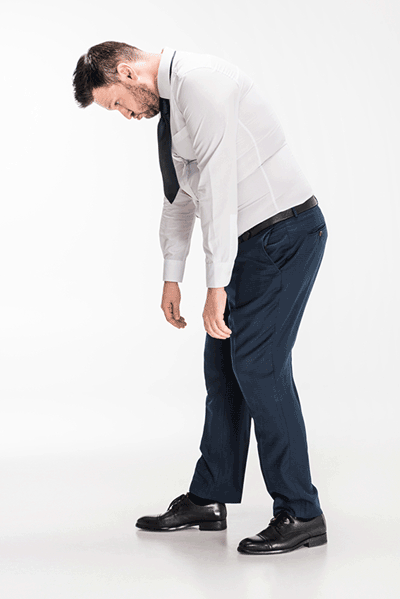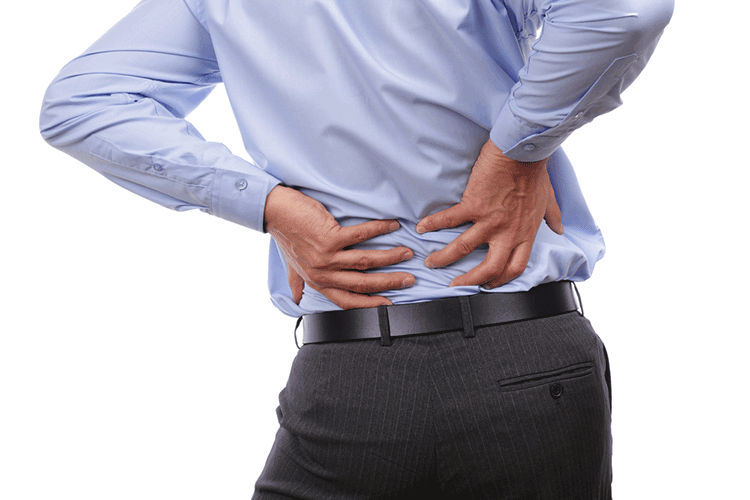Avoiding flexion before noon can be one of the quickest ways to relieve lower back pain
Avoiding flexion before noon is the A of my BASH acronym and it is one aspect which many people overlook in their daily routines.
What is flexion?
As defined by Merriam-Webster, flexion is a bending movement around a joint in a limb (such as the knee or elbow) that decreases the angle between the bones of the limb at the joint. So essentially, when you bend over forwards, you create spinal flexion or forward flexion.
Why should you avoid flexion before noon?
In an 18 month clinical trial, researchers examined the significance of avoiding flexion for the first four hours of the day in chronic lower back pain sufferers. In the study, a control group was given sham exercises to follow. It was discovered that the group that avoided flexion for the first few hours of the day reduced their pain intensity by 29% and their days in pain by 23%, whereas for the control group, there was no significant change in pain intensity and days in pain.
These results were achieved without any typical interventions such as physiotherapy, chiropractic care or specific stretching. The outcomes were a result of these subjects simply changing their morning movement patterns.
Why is your lower back more sensitive in the morning?
Researchers have estimated that stress on the lower back from bending is three times greater in the early morning than later in the day. This can exacerbate existing disc problems and chronic lower back pain.

The reason your lower back is more sensitive to flexion in the morning is because of what happens in your discs during the night, while you’re sleeping.
As you lay down to rest, the discs between your vertebrae swell with fluid as gravity no longer creates a downward pressure to compress your discs, as it does during the day.
The increase fluid accumulation increases the disc size and when performing flexion in the morning can increase stress on the surrounding tissues that encapsulate your disc.
If you are somebody who has been diagnosed with either a bulging or herniated then forward flexion movement will put even more pressure on these already compromised tissues as the disc material is pushed backwards with forward flexion movements.
How can I avoid flexion?
For the first 2 hours of the day, you should try to minimize all forward flexion and sitting, and try to stand as much as possible, or begin the day with a morning walk.
What about the toilet Colin? Okay yes, of course, nature may be calling, I get it…
Okay, so when you go, you should maintain a straight spine. Do not bend over staring at Youtube videos!!
Go in, sit up straight, do your business, and get back on your feet.
After the first couple of hours, then you can sit, kneel or squat down but only while maintaining a straight back.
So no going to the gym yet, running, or any other high impact activity.
When is it safe to flex the spine?
As the day progresses past the first 4 hrs, (close to lunchtime for most people) then you can begin gently flexing the spine again.
This would include bending forward in your chair, picking a piece of paper up off the floor, or generally just slouching around.
When can I return to more vigorous activities after avoiding flexion?
Activities such as:
- Going to the gym
- Mowing the lawn
- Golfing
- Moving heavy boxes in the garage
These activities should be left till much later in the day, late afternoon/early evening.
I don’t care if your wife is nagging you to take out the garbage, you tell her you will do it in the evening!
These may appear to be really small changes on the surface, but they can bring huge about a huge reduction in chronic lower back pain for you.
This is such an overlooked part of lower back rehabilitation, that I made sure to incorporate into my lower back pain recovery program, as it has benefitted so many of my clients over the years.
If you have found this information helpful and useful, please feel free to share this with others who may be suffering from lower back pain.
Let’s spread the love people!

